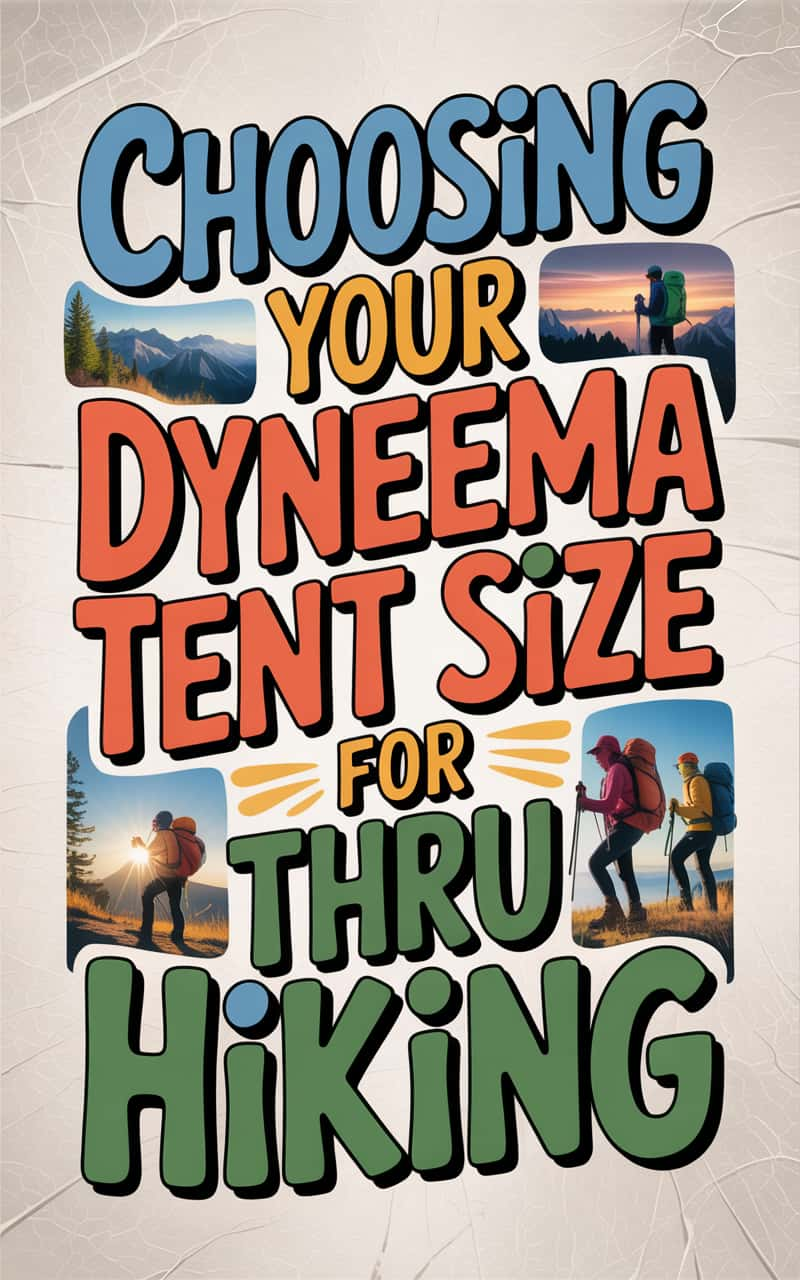Choosing the right Dyneema Composite Fabric (DCF) tent size comes down to balancing three key factors: weight, space, and comfort. Solo DCF tents (1P) typically weigh 12-20 oz and work best for minimalist hikers. Two-person DCF tents (2P) weigh 18-30 oz but offer significantly more livable space. Three-person DCF tents (3P) weigh 1.5-2.5 lbs and provide the most comfort while still maintaining ultralight advantages.
Understanding Dyneema Composite Fabric (DCF) Tent Categories
Dyneema Composite Fabric tents fall into three main categories, each designed for different hiking styles and priorities. DCF's exceptional strength-to-weight ratio makes these tents significantly lighter than traditional materials while maintaining durability.
Solo (1P) DCF tents offer 30-40 inches of width, enough space for one person and essential gear. These tents focus on pure minimalism and typically weigh 12-20 oz, making them ideal for experienced hikers who prioritize speed and low pack weight.
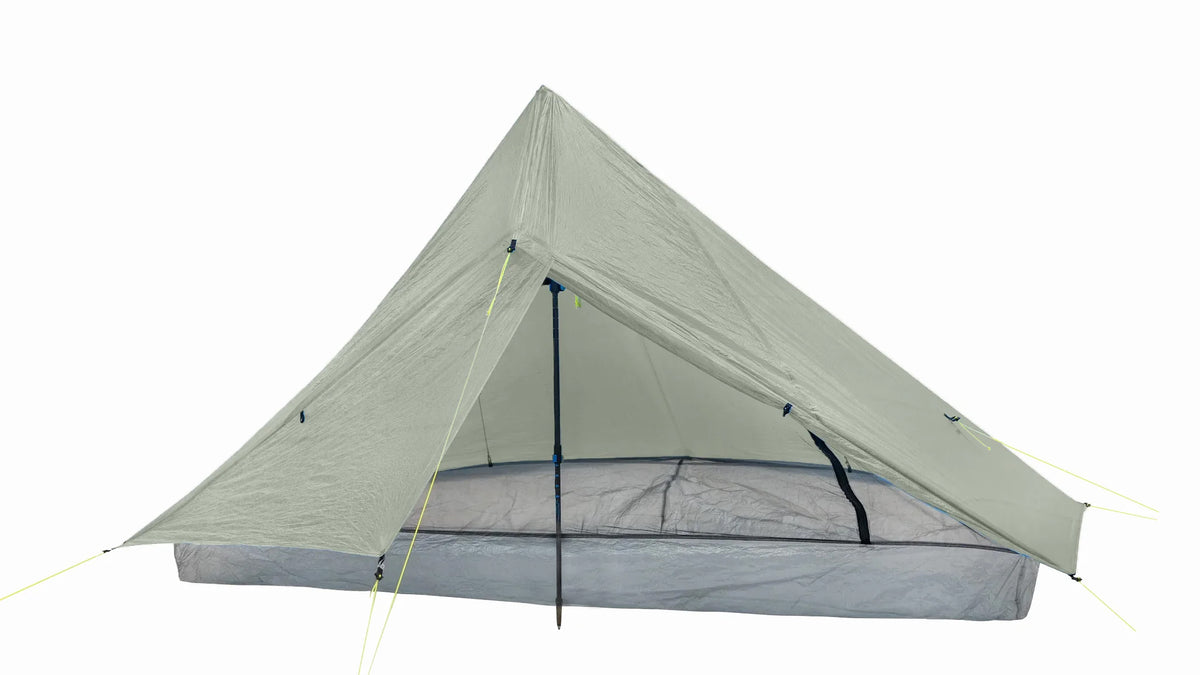
Two-person (2P) DCF tents provide 44-50 inches of width, giving you room to sit up comfortably and store gear without cramping. Despite the name, many hikers use 2P DCF tents for solo comfort camping. They weigh 18-30 oz.
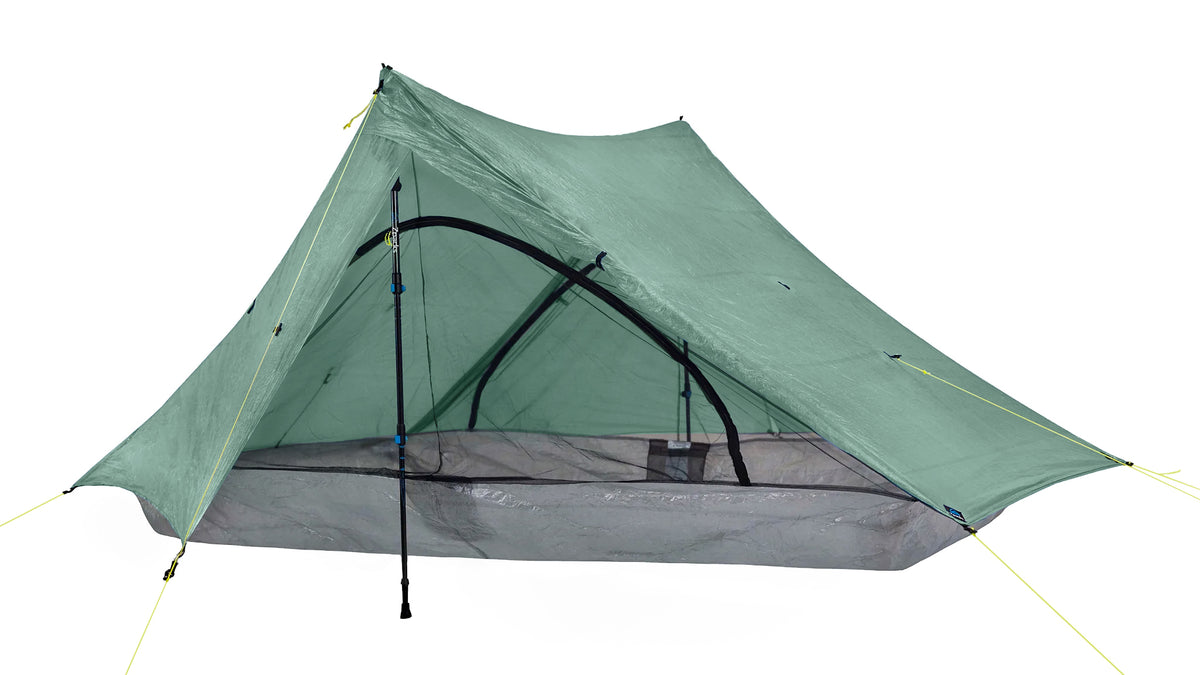
Three-person (3P) DCF tents offer 58-65 inches of width, providing genuine comfort for two people or luxury space for solo hikers. Even at this size, DCF keeps weights between 1.5-2.5 pounds, still ultralight territory.
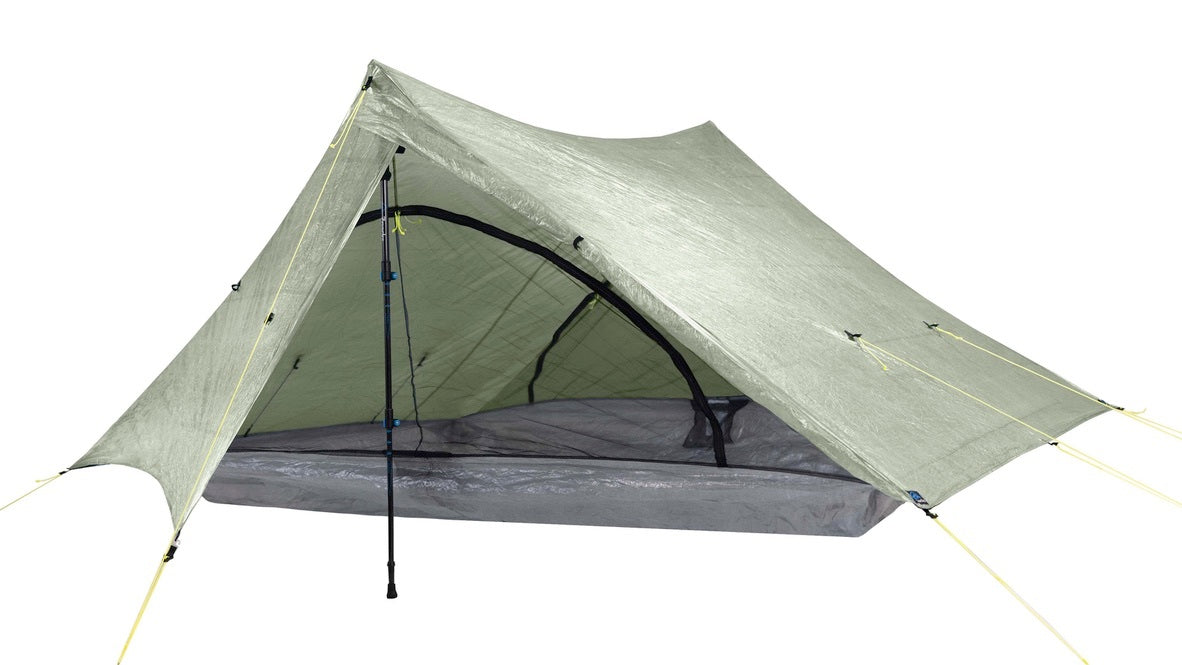
"The right tent size isn't about what looks good on Instagram, it's about what works for your actual hiking style and comfort needs."
Length remains consistent across sizes at 84-90 inches, while peak height ranges from 42-48 inches. Don't expect to stand upright in any ultralight tent.
Weight Impact on Your Pack Load
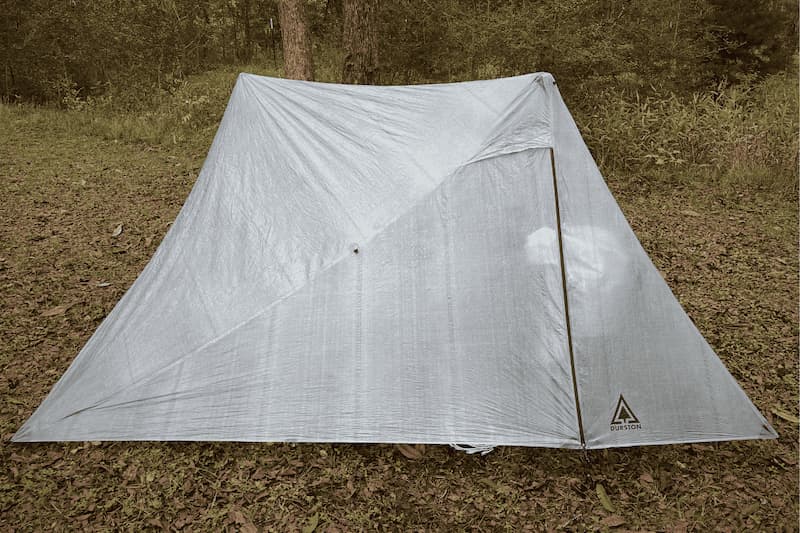
Every ounce matters when backpacking, and DCF tent size directly affects your total pack weight while keeping you in ultralight territory.
Solo DCF tents typically weigh 12-20 ounces, keeping you firmly in ultralight territory. Popular models like the Zpacks Plex Solo weigh around 11.7 oz, while the Hyperlite Mountain Gear Mid 1 weighs 16 oz.
Two-person DCF tents range from 18-30 ounces. The Zpacks Duplex Lite weighs 14.9 oz, while the Hyperlite Mountain Gear Unbound 2 weighs in at 22.4oz. This 6-15 oz weight increase provides significantly more space.
Three-person DCF tents typically weigh 1.5-2.5 pounds. The Zpacks Triplex weighs 21.4 oz, while larger models like the Hyperlite Mountain Gear UltaMid 4 reach 22.4 oz.
DCF's magic is keeping even 3-person tents under 2 pounds... weights that traditional fabrics can't match in solo tents.
Dyneema Composite Fabric's strength-to-weight ratio makes these weight penalties manageable compared to traditional tent materials, allowing larger tents to remain ultralight.
Interior Space and Comfort Considerations
Floor space varies dramatically between tent sizes, affecting your comfort and gear organization.
Solo tents provide just enough room for a single sleeping pad (20-25 inches wide) plus minimal gear storage. Taller hikers over 6 feet need to verify tent length compatibility.
Two-person tents accommodate sleeping pads up to 50 inches wide or two standard 20-inch pads. This extra space allows for gear storage, cooking during storms, and general comfort.
Vestibule space becomes crucial for gear protection. Solo tents often have smaller vestibules, while larger tents provide more weather-protected storage.
Wall geometry affects usable space more than floor dimensions. Steep walls maximize interior volume, while sloped walls reduce actual living space.
Matching Tent Size to Your Hiking Style
Your backpacking approach should determine tent size, not arbitrary preferences.
Fastpacking and ultralight hiking favor solo tents. If you're covering 20+ miles daily and camping only for sleep, minimal space works fine.
Comfort-focused solo hiking benefits from 2P tents. The weight penalty buys you space to relax, cook, and wait out weather comfortably.
Hiking with partners requires 2P minimum for two people, though many couples prefer 3P tents for relationship harmony.
Extended trips with more gear often necessitate sizing up one level for adequate storage space.
Your tent becomes your home on long hikes. A few extra ounces for livability often proves worthwhile after day three.
Weather Protection with DCF Tents
Storm performance varies between DCF tent sizes, but all benefit from Dyneema's superior weather resistance.
Solo DCF tents prioritize weight over weather protection. Their smaller profile offers less wind resistance but fewer guy-out points for stability in extreme conditions.
Larger DCF tents provide better rainfly coverage, more ventilation options, and additional anchor points for challenging conditions without significant weight penalties.
DCF's waterproofing remains excellent across all sizes, maintaining performance in wet conditions. Unlike traditional fabrics, DCF doesn't absorb water and maintains consistent performance when wet.
Condensation management improves with larger DCF tents due to increased air volume and better ventilation systems, while the fabric's properties help reduce moisture buildup.
Key Trade-offs: Weight vs. Space vs. Features in DCF Tents
Understanding the fundamental compromises in DCF tents helps you make an informed decision while staying ultralight.
| Factor | Solo DCF Tent (1P) | Two-Person DCF Tent (2P) | Three-Person DCF Tent (3P) |
|---|---|---|---|
| Weight | 12-20 oz | 18-30 oz | 1.5-2.5 lbs |
| Floor Space | 30-40" wide | 44-50" wide | 58-65" wide |
| Comfort Level | Minimal | Moderate | High |
| Weather Protection | Basic | Good | Excellent |
| Price Range | $500-700 | $600-900 | $800-1200+ |
Solo DCF tents excel at speed and minimal weight while providing adequate weather protection for experienced hikers.
Two-person DCF tents offer the best balance of weight, space, and features, remaining ultralight while providing livable space.
Three-person DCF tents maximize comfort while still maintaining ultralight credentials that traditional fabrics can't match.
Making Your Final DCF Tent Decision
Choose your DCF tent size based on these priority factors:
Choose a solo DCF tent if:
- You're an experienced ultralight hiker
- Daily mileage exceeds 20 miles
- You minimize gear and prioritize speed
- Weight is your primary concern
Choose a two-person DCF tent if:
- You want comfortable solo camping under 2 lbs
- You occasionally hike with a partner
- You carry photography or cooking gear
- You value the balance of weight and livability
Choose a three-person DCF tent if:
- You regularly hike with a partner
- Comfort is important but you want to stay ultralight
- You take extended trips with extra gear
- You want maximum space while staying under 2.5 lbs
DCF's advantage is that even 3-person tents remain ultralight, letting you choose based on comfort rather than weight alone.
Remember that DCF tents represent a significant investment. The beauty of Dyneema Composite Fabric is that it allows you to prioritize comfort and space without leaving ultralight territory, making the size decision less about weight compromise and more about actual space needs.
